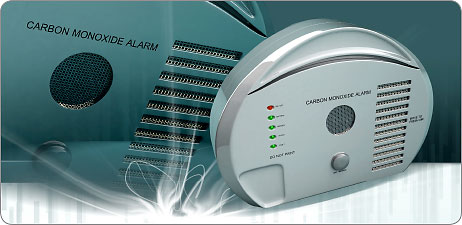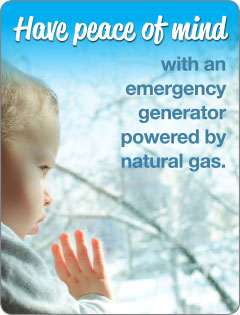Carbon Monixide: "The Silent Killer"

What is Carbon Monoxide (CO)?
Carbon monoxide is a product of the combustion of many fuels in the air. Under normal operating conditions, natural gas burns cleanly and safely. If the gas is not burning properly or a gas appliance is not operating properly incomplete combustion can occur and excess carbon monoxide can be produced. Carbon monoxide can also build up from inadequate ventilation. Carbon monoxide is an odorless, colorless, and toxic gas that is potentially fatal. It is a "silent" killer.
Signs of buildup of this colorless, odorless gas can include:
- Stale, smelly, or stuffy air
- Soot from fireplaces, furnaces, space heaters, and gas logs
- High indoor humidity
Symptoms of Carbon Monoxide Poisoning include:
- Dizziness
- Shortness of breath
- Headaches
- Confusion
- Nausea
- Fainting
The initial symptoms of Carbon Monoxide Poisoning are often compared to the flu (but without the fever). Symptoms can occur immediately or more gradually after long-term exposure.
If you experience these symptoms after being in an enclosed area, get fresh air immediately and seek medical attention. Inform the medical staff that you may have Carbon Monoxide Poisoning. Call the Fire Department to determine when it is safe to reenter your home and call a qualified professional technician to check your fuel-burning appliances.
Tips to Keep Your Home Safe
- Always have your natural gas appliances installed and maintained by a qualified professional and follow the appliance manufacturer’s directions for safe operation and care.
- Have your natural gas appliances (including vents) inspected and serviced annually by a licensed, qualified professional.
- Install carbon monoxide alarms, which can provide added protection. The carbon monoxide alarms should be certified to meet current standards. A carbon monoxide alarm can provide added protection but it is no substitute for proper installation, use, and upkeep of appliances that are potential carbon monoxide sources.
- Do not cut off or restrict combustion air sources to appliances. Pay particular attention to air access for appliances that are located in enclosed closets or utility rooms.
In most cases, with a combination of preventative maintenance and common sense, you can keep your home carbon monoxide free.

